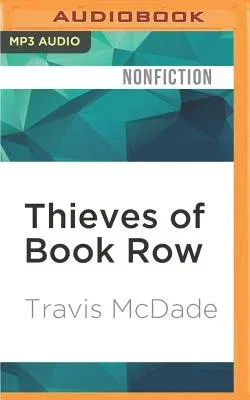No one had ever tried a caper like this before. The goods were kept in a
secure room under constant scrutiny, deep inside a crowded building with
guards at the exits. The team picked for the job included two old hands
known only as Paul and Swede, but all depended on a fresh face, a kid
from Pinetown, North Carolina. In the Depression, some fellows were
willing to try anything--even a heist in the rare book room of the New
York Public Library. In Thieves of Book Row, Travis McDade tells the
gripping tale of the worst book-theft ring in American history, and the
intrepid detective who brought it down. Author of The Book Thief and a
curator of rare books, McDade transforms painstaking research into a
rich portrait of Manhattan's Book Row in the 1920s and '30s, where
organized crime met America's cultural treasures in dark and crowded
shops along gritty Fourth Avenue. Dealers such as Harry Gold, a tough
native of the Lower East Side, became experts in recognizing the value
of books and recruiting a pool of thieves to steal them--many of them
unemployed men who drifted up the Bowery or huddled around fires in
Central Park's shantytowns. When Paul and Swede brought a new recruit
into his shop, Gold trained him for the biggest score yet: a first
edition of Edgar Allan Poe's Al Aaraaf, Tamerlane and Minor Poems.
Gold's recruit cased the rare-book room for weeks, searching for a
weakness. When he found one, he struck, leading to a breathtaking game
of wits between Gold and NYPL special investigator G. William Bergquist.
Both a fast-paced and true-life thriller, Thieves of Book Row provides
a fascinating look at the history of crime and literary culture.

